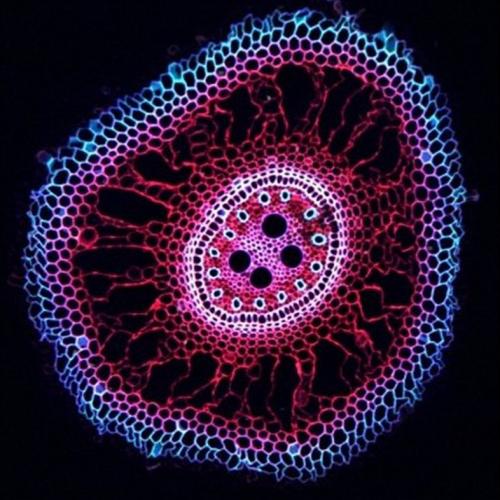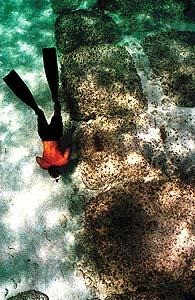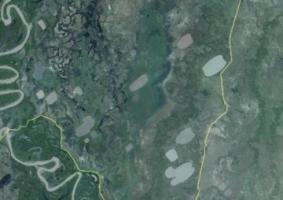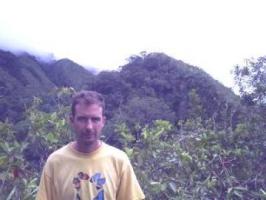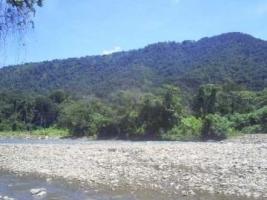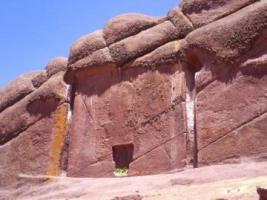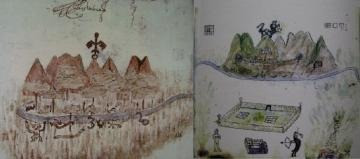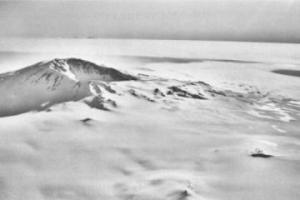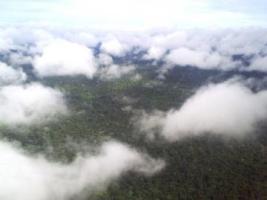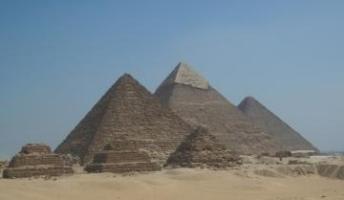Copy Link
Add to Bookmark
Report
Alife Digest Number 075

Alife Digest, Number 075
Friday, April 17th 1992
~~~~~~~~~~~~~~~~~~~~~~~~~~~~~~~~~~~~~~~~~~~~~~~~~~~~~~~~~~~~~~~~~~~~~~~~~~~
~ Artificial Life Distribution List ~
~ ~
~ All submissions for distribution to: alife@cognet.ucla.edu ~
~ All list subscriber additions, deletions, or administrative details to: ~
~ alife-request@cognet.ucla.edu ~
~ All software, tech reports to Alife depository through ~
~ anonymous ftp at ftp.cognet.ucla.edu in ~ftp/pub/alife (128.97.50.19) ~
~ ~
~ List maintainers: Liane Gabora and Rob Collins ~
~ Artificial Life Research Group, UCLA ~
~ ~
~~~~~~~~~~~~~~~~~~~~~~~~~~~~~~~~~~~~~~~~~~~~~~~~~~~~~~~~~~~~~~~~~~~~~~~~~~~
Today's Topics:
Calendar of Alife-related Events
Conference : AISB'93
TR Announcement: "Darwinian Ontology"
Tierra Update
Alife III 4-H Show
Artificial Life III Workshop
----------------------------------------------------------------------
Date: Tue, 14 Apr 92 11:30:29 -0700
From: liane@cs.ucla.edu (Liane Gabora)
Subject: Calendar of Alife-related Events
**********************************************************************
CALENDAR OF ALIFE-RELATED ACTIVITIES:
Canadian AI Conference, Vancouver, BC May 11-15, 1992
Artificial Life III, Santa Fe, NM June 15-19, 1992
Biocomputation Workshop, Monterey, CA June 22-24, 1992 v74
10th National Conference on AI, San Jose, CA Jul 12-17, 1992
14th Conf of the Cognitive Science Soc, Bloomington IN Jul 29-Aug 1, 1992
10th European Conference on AI Aug 3-7, 1992
13th International Congress on Cybernetics, Belgium Aug 24-28, 1992
Worshop on Neural Networks, Liverpool, England Sep 7-8, 1992 v74
Parallel Problem Solving from Nature, Brussels Sep 28-30, 1992
State of the Art in Ecological Modelling, Kiel Germany Sep 28-Oct 2, 1992
Neural Processing Information Systems (NIPS), Denver Nov 28-Dec 3, 1992 v73
2nd International Conf on
Simulation of Adaptive Behavior, Honolulu, Hawaii Dec 7-11, 1992 v 74
International Conference on System Sciences, Hawaii Jan 5-8, 1993 v74
AI and Simulation of Behaviour Conf, Birmingham UK Mar 29-Apr 2, 1993 v75
(Send announcements of other activities to alife@cognet.ucla.edu)
**********************************************************************
------------------------------
Subject: Conference : AISB'93
Date: Sat, 11 Apr 92 14:25:38 BST
From: Donald Peterson <aisb93-prog@computer-science.birmingham.ac.uk>
================================================================
AISB'93 CONFERENCE : ANNOUNCEMENT AND CALL FOR PAPERS
Theme: "Prospects for AI as the General Science of Intelligence"
29 March -- 2 April 1993
University of Birmingham
================================================================
1. Introduction
2. Invited talks
3. Topic areas for submitted papers
4. Timetable for submitted papers
5. Paper lengths and submission details
6. Call for referees
7. Workshops and Tutorials
8. LAGB Conference
9. Email, paper mail, phone and fax.
1. INTRODUCTION
The Society for the Study of Artificial Intelligence and the
Simulation of Behaviour (one of the oldest AI societies) will hold its
ninth bi-annual conference on the dates above at the University of
Birmingham. The site is Manor House, a charming and convivial
residential hall close to the University.
Tutorials and Workshops are planned for Monday 29th March and the
morning of Tuesday 30th March, and the main conference will start with
lunch on Tuesday 30th March and end on Friday 2nd April.
The Programme Chair is Aaron Sloman, and the Local Arrangements
Organiser is Donald Peterson, both assisted by Petra Hickey.
The conference will be "single track" as usual, with invited speakers
and submitted papers, plus a "poster session" to allow larger numbers to
report on their work, and the proceedings will be published.
The conference will cover the usual topic areas for conferences on AI
and Cognitive Science. However, with the turn of the century
approaching, and with computer power no longer a major bottleneck in
most AI research (apart from connectionism) it seemed appropriate to
ask our invited speakers to look forwards rather than backwards, and
so the theme of the conference will be "Prospects for AI as the
general science of intelligence". Submitted papers exploring this are
also welcome, in addition to the normal technical papers.
2. INVITED TALKS
So far the following have agreed to give invited talks:
Prof David Hogg (Leeds)
"Prospects for computer vision"
Prof Allan Ramsay (Dublin)
"Prospects for natural language processing by machine"
Prof Glyn Humphreys (Birmingham)
"Prospects for connectionism - science and engineering".
Prof Ian Sommerville (Lancaster)
"Prospects for AI in systems design"
Titles are provisional.
3. TOPIC AREAS for SUBMITTED PAPERS
Papers are invited in any of the normal areas represented at AI and
Cognitive Science conferences, including:
AI in Design,
AI in software engineering
Teaching AI and Cognitive Science,
Analogical and other forms of Reasoning
Applications of AI,
Automated discovery,
Control of actions,
Creativity,
Distributed intelligence,
Expert Systems,
Intelligent interfaces
Intelligent tutoring systems,
Knowledge representation,
Learning,
Methodology,
Modelling affective processes,
Music,
Natural language,
Naive physics,
Philosophical foundations,
Planning,
Problem Solving,
Robotics,
Tools for AI,
Vision,
Papers on neural nets or genetic algorithms are welcomed, but should be
capable of being judged as contributing to one of the other topic areas.
Papers may either be full papers or descriptions of work to be presented
in a poster session.
4. TIMETABLE for SUBMITTED PAPERS
Submission deadline: 1st September 1992
Date for notification of acceptances: mid October 1992
Date for submission of camera ready final copy: mid December 1992
The conference proceedings will be published. Long papers and invited
papers will definitely be included. Selected poster summaries may be
included if there is space.
5. PAPER LENGTH and SUBMISSION DETAILS
Full papers:
10 pages maximum, A4 or 8.5"x11", no smaller than 12 point print
size Times Roman or similar preferred, in letter quality print.
Poster submissions
5 pages summary
Excessively long papers will be rejected without being reviewed.
All submissions should include
1. Full names and addresses of all authors
2. Electronic mail address if available
3. Topic area
4. Label: "Long paper" or "Poster summary"
5. Abstract no longer than 10 lines.
6. Statement certifying that the paper is not being
submitted elsewhere for publication.
7. An undertaking that if the paper is accepted at least
one of the authors will attend the conference.
THREE copies are required.
6. CALL for REFEREES
Anyone willing to act as a reviewer during September should write to the
Programme Chair, with a summary CV or indication of status and
experience, and preferred topic areas.
7. WORKSHOPS and TUTORIALS
The first day and a half of the Conference are allocated to workshops
and tutorials. These will be organised by Dr Hyacinth S. Nwana, and
anyone interested in giving a workshop or tutorial should contact her
at:
Department of Computer Science,
University of Keele,
Staffs.
ST5 5BG.
U.K.
phone: +44 782 583413, or +44 782 621111(x 3413)
email
JANET: nwanahs@uk.ac.keele.cs
BITNET: nwanahs%cs.kl.ac.uk@ukacrl
UUCP : ...!ukc!kl-cs!nwanahs
other : nwanahs@cs.keele.ac.uk
8. LAGB CONFERENCE.
Shortly before AISB'93, the Linguistics Association of Great Britain
(LAGB) will hold its Spring Meeting at the University of Birmingham
from 22-24th March, 1993. For more information, please contact Dr.
William Edmondson: postal address as below; phone +44-(0)21-414-4763;
email EDMONDSONWH@vax1.bham.ac.uk
9. EMAIL, PAPER MAIL, PHONE and FAX.
Email:
* aisb93-prog@cs.bham.ac.uk
(for communications relating to submission of papers to the programme)
* aisb93-delegates@cs.bham.ac.uk
(for information on accommodation, meals, programme etc. as it
becomes available --- enquirers will be placed on a mailing list)
Address:
AISB'93 (prog) or AISB'93 (delegates),
School of Computer Science,
The University of Birmingham,
Edgbaston,
Birmingham,
B15 2TT,
U.K.
Phone:
+44-(0)21-414-3711
Fax:
+44-(0)21-414-4281
Donald Peterson and Aaron Sloman, April 1992.
---------------------------------------------------------------------------
------------------------------
Date: Mon, 13 Apr 1992 11:58 GMT
From: "Barry McMullin, DCU (Dublin, Ireland) <75008378@DCU.IE>"
Subject: TR Announcement: "Darwinian Ontology"
[The following announcment is being cross-posted on Alife Digest,
GA-List Digest, and POP+BIO. If you subscribe to more than one,
my apologies for the noise. All flames to me, not the list or
list maintainers! This TR is first in a series I hope to complete
over the next month or two. Instructions for obtaining a copy of
the TR are at the end. Enjoy.]
+++++++++++++++++
TR ANNOUNCEMENT
---------------
Essays on Darwinism
1: Ontological Foundations
Barry McMullin,
School of Electronic Engineering,
Dublin City University,
Dublin 9,
IRELAND.
<McMullinB@DCU.IE>
March 1992
Technical Report: bmcm9201
The problem tackled in this essay is to formulate ``Darwinian''
theory in a way which is divorced from any specifically
biological interpretation. For my purposes, the crucial
constraint on this abstract formulation of Darwinian theory is
that it must qualify as a realisation of {\em unjustified
variation and selective retention\/} in the sense of
D.T.~Campbell [see .bib references below]---for it is (arguably)
only thus that Darwinian evolution can lead to the spontaneous
growth of ``knowledge''. I hope that such an abstract formulation
might help to clarify the application of the theory even in its
native biological setting; but, more importantly, it seems to me
that this exercise is a necessary pre-requisite for the valid
application of Darwinian principles in any domain {\em other\/}
than conventional, terrestrial, biology---such as the emerging
field of study commonly referred to as {\em Artificial Life}. In
attempting to solve the problem of formulating a satisfactory,
abstract, version of Darwinism, I introduce a novel ontological
category: the Similarity-lineage, or {\em S-lineage}. With the
aid of this hybrid category, which combines some aspects of both
a class and an individual, I argue that Darwinian evolution
relies on a process of S-lineage selection---which is to say that
S-lineages are, in a certain precise sense, the elusive Darwinian
{\em units of selection}.
+++++++++++++++++
REFERENCES:
-----------
@ARTICLE{
Campbell:BlindVariationInCreativeThought,
AUTHOR = "Donald T. Campbell",
TITLE = "Blind Variation and Selective Retention in
Creative Thought as in Other Knowledge Processes",
JOURNAL = "Psychological Review",
YEAR = 1960,
VOLUME = 67,
NUMBER = 6,
PAGES = "380--400"
}
@INCOLLECTION{
Campbell:BlindVariationAsGeneralStrategy,
AUTHOR = "Donald T. Campbell",
TITLE = "Blind Variation and Selective Survival as a
General Strategy in Knowledge-Processes",
CROSSREF = "Yovits:SelfOrganizingSystems",
PAGES = "205--231"
}
@INCOLLECTION{
Campbell:EvolutionaryEpistemology,
AUTHOR = "Donald T. Campbell",
TITLE = "Evolutionary Epistemology",
CROSSREF = "Schilpp:Popper",
PAGES = "413--463 (Book~I)"
}
@INCOLLECTION{
Campbell:UnjustifiedVariation,
AUTHOR = "Donald T. Campbell",
TITLE = "Unjustified Variation and Selective Retention
in Scientific Discovery",
CROSSREF = "Ayala:PhilosophyOfBiology",
CHAPTER = 9,
PAGES = "139--161"
}
@BOOK{
Ayala:PhilosophyOfBiology,
EDITOR = "Francisco Jose Ayala and Theodosius Dobzhansky",
TITLE = "Studies in the Philosophy of Biology",
BOOKTITLE = "Studies in the Philosophy of Biology",
PUBLISHER = "The Macmillan Press Ltd.",
ADDRESS = "London",
YEAR = 1974
}
@BOOK{
Schilpp:Popper,
EDITOR = "Paul Arthur Schilpp",
TITLE = "The Philosophy of Karl Popper",
BOOKTITLE = "The Philosophy of Karl Popper",
PUBLISHER = "Open Court",
ADDRESS = "Illinois",
YEAR = 1974,
VOLUME = "XIV",
SERIES = "The Library of Living Philosophers"
}
@BOOK{
Yovits:SelfOrganizingSystems,
EDITOR = "Marshall C. Yovits and Scott Cameron",
TITLE = "Self-Organizing Systems",
BOOKTITLE = "Self-Organizing Systems",
PUBLISHER = "Pergamon Press",
ADDRESS = "Oxford",
YEAR = 1960,
NOTE = "Proceedings of an interdisciplinary conference,
5~and 6~May, 1959"
}
+++++++++++++++++
Copies are available in the following three ways, in order of
(my) preference:
1: ftp bmcm9201.ps.Z from pub/alife/papers on the Alife archive
(ftp.cognet.ucla.edu). To retrieve, do (something like) the
following:
unix-1> ftp ftp.cognet.ucla.edu
Connected to ftp.cognet.ucla.edu
Name (ftp.cognet.ucla.edu:): anonymous
331 Guest login ok, sent ident as password.
Password: [identification]
230 Guest login ok, access restrictions apply.
ftp> cd pub/alife/papers
ftp> binary
ftp> get bmcm9201.ps.Z
ftp> quit
unix-2> uncompress bmcm9201.ps.Z
unix-3> lpr -P(your_local_postscript_printer) bmcm9201.ps
[Many thanks to Alife maintainer, Rob Collins, for making this
possible. If you have any problems, complain to me not Rob.]
2: If you don't have ftp access, I can email the file to you, on
request (uuencoded, split into about 3 by 55k chunks). You'll have
to be able to strip off the mail headers, glue it back together,
uudecode, uncompress, and print postscript (or preview etc.).
3: If that's all gobbledegook to you, then a limited number of
good old fashioned hard copies will be available. Send me your
full postal address. First come first served.
In cases 2 and 3 contact me as <McMullinB@DCU.IE> (do *not* send
requests to the whole list...).
+++++++++++++++++
That's all for now folks .... Barry.
------------------------------
Date: Tue, 14 Apr 92 17:36:15 MDT
From: ray@santafe.edu (Tom S. Ray)
Subject: Tierra Update
TIERRA UPDATE:
(Release of Tierra V3.1, Beagle source code, ALmond source code,
Mailing Lists, Abstract, Publications, Lectures)
This message contains:
1) Announcement of the release of Tierra V3.1
2) Beagle source code now available
3) ALmond source code and libraries now available
4) Tierra mailing lists
5) How to get the code
6) List of related publications and upcoming lectures
7) Abstract describing Tierra
1) Announcement of the release of Tierra V3.1
A new version of Tierra, V3.1, is now available in the ftp site, or
by mail on DOS disks. The new version has the following features:
a) The bugs are out. In August 1991, there was a major revision resulting
in V3.0. Some bugs were introduced in that revision, and they have been
eliminated. The V3.0 bugs are documented in the ``Known Bugs'' section
of the V3.1 Tierra.doc file. If you have modified V3.0 so that you don`t
plan to move up to V3.1, you should fix the bugs in your personal version.
b) A nifty user interface has been added by Dan Pirone. This allows you to
interact with a running Tierra, and optionally view running frequency
distributions of size or genotype classes, among other things.
c) Tested on many platforms. V3.0 did not compile well on the RS6000 or
the NeXT. V3.1 has been tested on many platforms, and the Makefile
includes options for most platforms. It should now compile with no
modification just about anywhere.
d) DOS memory management has been improved, so that for reasonable soup sizes
Tierra will not run out of memory, and should be able to run indefinitely
on a DOS machine. Work is continuing on this front. The version in
the ftp site will get confused and come down unnecessarily under some
circumstances. If this is an issue for you, stay tuned, it should
be fixed soon.
2) Beagle source code now available
Beagle is now distributed with the complete source code. You will not
be able to compile it without the Greenleaf DataWindows libraries, but the
source is available in case you want to port it to your favorite platform.
See the /tierra/beagle directory of the ftp site.
Note that the beagle.exe file in the ftp site was infected by a virus
from March 27, 1992 to April 6, 1992 at 4:15 pm Mountain time. The virus has
been identified by Mcafee Associates scan89b program as:
VIRUS ID 1591/1575 [15xx] and can easily be transmitted to other programs
by running beagle.exe on your PC. If you picked up and used beagle during
this period, please obtain a copy of vscan89b.zip and clean89b.zip from the
ftp site to find and exterminate this problem. If you have not run the
beagle.exe program on a PC, then the virus can not have spread. In that case
you need only disinfect or replace the beagle.exe file. This virus only
replicates itself, it does not destroy data.
3) ALmond source code and libraries now available
The source code and libraries for the ALmond monitor are now in the
ftp site. They are in the /almond directory. They compile and run on Suns,
but probably not much else. ALmond runs as an independent process, and
establishes socket communications with a running Tierra on the same or a
different machine. ALmond then makes a nice color graphic display of
activity in Tierra. ALmond can be attached and detached from Tierra without
disturbing it. ALmond was written by Marc Cygnus. We are getting some
complaints from people trying to use ALmond. This is probably only for
the more experienced hacker. In the meantime, we are looking into the
complaints in the hopes of smoothing out the problems.
4) Tierra mailing lists
There is a mailing list for Tierra users. (actually 2, but you only want
to be on one of them). The first list is for people who only want to get the
official announcements, updates and bug-fixes. The other will carry the
official postings, and is intended for discussion of Tierra by users.
This is distributed in digest form, when there is enough material.
The lists are:
tierra-announce official updates, patches and announcements only
tierra-digest digest form of user discussions
The addresses are:
tierra-request@life.slhs.udel.edu the list administrator. To be added,
removed, or complain about problems with
any of these lists.
tierra-digest@life.slhs.udel.edu to post to the list.
tierra-bug@life.slhs.udel.edu for bug-reports or questions about the
code or installation.
You might also be interested in the Artificial Life mailing list.
To subscribe, send a request to: alife-request@cognet.ucla.edu
post to the list by sending a message to: alife@cognet.ucla.edu
5) How to get the code
If you picked up the original release, it would be well worth your while
to pick up the new version. If you use the software, be sure to pick up new
versions from the ftp site. The source in the ftp site will be replaced with
new versions on a roughly monthly basis.
The complete source code for the Tierra simulator is
available by anonymous ftp at:
tierra.slhs.udel.edu [128.175.41.34] and
life.slhs.udel.edu [128.175.41.33]
in the directories /tierra, /tierra/beagle, and /almond.
to get it, ftp to tierra or life, log in as user "anonymous" and give your
real name (eg. tom@udel.edu) as a password. (We ask that you use your
logname as your password so that we will know who is getting the program,
in case we want to contact you about new releases).
then give the command `cd tierra', to get a list of files type `dir'.
you will see the following files:
TIERRA1.DOC A detailed description of tierra and how to use it.
TIERRA2.DOC in three parts
TIERRA3.DOC
Part01 the source code in shar format
... in ten parts
Part10
announce this announcement
tierra1.tex Parts 1 & 2 of a manuscript describing Tierra,
tierra2.tex in LaTeX format.
argpp.prj Borland C++ project file for arg
tierrapp.prj Borland C++ project file for Tierra
beagle directory containing source & executables for Beagle
The shar files contain the TIERRAX.DOC files, so if you want the source code,
you don't need to copy TIERRAX.DOC separately. To unpack the shar files, use
`unshar', or `sh'. Remember to transfer binaries in binary mode (the pp.prj
files, the .bgi files, and the .exe files are binary).
The version released includes significant contributions from
Tom Uffner, Dan Pirone and Marc Cygnus. The software remains copyrighted
("all rights reserved"), and is not being placed in the public domain.
However, it will be made available free of charge and may be freely
distributed. The intent is that it not be used for profit making activities
unless some royalty arrangement is entered into with the authors.
The source code will compile on DOS or Unix systems. A year ago it
compiled on the IBM 3090, and it should be possible to compile it there again
with moderate effort. The DOS version requires either CGA or VGA graphics
(no other known requirements).
If you don't have ftp access, you may purchase the source code and
DOS executables on disks for $65 (specify 3.5" or 5.25" disks). Make checks
drawn in US dollars on a US bank, payable to Virtual Life, and mail order to:
Virtual Life, P.O. Box 625, Newark, DE 19715
In the period of February through August of 1992, a more rapid response
may be had by mailing the order to Tom Ray at the Santa Fe Institute, see
address below.
6) List of related publications and upcoming lectures
The recent publicity about my work (Technology Review, April 1991;
Science News, August 10, 1991; New York Times, August 27, 1991; Computerworld
September 30, 1991; Scientific American, January 1992; Economist, January 4,
1992; New Scientist, February 22, 1992; Nature, February 27, 1992) has
generated a lot of interest. I wanted to list the relevant publications, and
also the upcoming seminars.
Ray, T. S. 1991. ``Is it alive, or is it GA?''
Proceedings of the 1991 International Conference on Genetic Algorithms,
Eds. R. K. Belew and L. B. Booker, San Mateo, CA: Morgan Kaufmann, 527-534.
Ray, T. S. 1991. ``An approach to the synthesis of life.''
Artificial Life II, Santa Fe Institute Studies in the Sciences of
Complexity, vol. XI, Eds. C. Langton, C. Taylor, J. D. Farmer, &
S. Rasmussen, Redwood City, CA: Addison-Wesley, 371-408.
Ray, T. S. 1991. ``Population dynamics of digital organisms.''
Artificial Life II Video Proceedings, Ed. C. G. Langton,
Redwood City, CA: Addison Wesley.
Ray, T. S. 1991. ``Evolution and optimization of digital organisms.''
Scientific Excellence in Supercomputing: The IBM 1990 Contest Prize
Papers, Eds. Keith R. Billingsley, Ed Derohanes, Hilton Brown, III.
Athens, GA, 30602, The Baldwin Press, The University of Georgia.
Publication date: December 1991.
This work will also be presented in the following upcoming seminars:
Cornell University, Mathematical Sciences Inst., CA Workshop, May 10-12, 1992
Kent State, Biology, May 14, 1992
General Motors, Sigma Xi, Michigan, May 15, 1992
Summer School on Environmental Dynamics, Istituto Veneto, Venice, Italy,
June 1-7, 1992
Gordon Conference on Theoretical Biology, New Hampshire, June 8-12, 1992
Santa Fe Institute, Artificial Life Workshop, June 15-19, 1992
7) Abstract describing Tierra
**** BEGIN ABSTRACT ****
Synthetic organisms have been created based on a computer metaphor of
organic life in which CPU time is the ``energy'' resource and memory is
the ``material'' resource. Memory is organized into informational
patterns that exploit CPU time for self-replication. Mutation generates
new forms, and evolution proceeds by natural selection as different
genotypes compete for CPU time and memory space.
Observation of nature shows that evolution by natural selection is
capable of both optimization and creativity. Artificial models of evolution
have demonstrated the optimizing ability of evolution, as exemplified by
the field of genetic algorithms. The creative aspects of evolution have been
more elusive to model. The difficulty derives in part from a tendency of
models to specify the meaning of the ``genome'' of the evolving entities,
precluding new meanings from emerging. Tierra is a natural model of
evolution demonstrating both optimization and creativity, in which the
genome consists of sequences of executable machine code.
>From a single rudimentary ancestral ``creature'',
very quickly there evolve parasites, which are not able to replicate in
isolation because they lack a large portion of the genome. However, these
parasites search for the missing information, and if they locate it in a
nearby creature, parasitize the information from the neighboring genome,
thereby effecting their own replication.
In some runs, hosts evolve immunity to attack by parasites.
When immune hosts appear, they often increase in frequency, devastating the
parasite populations. In some runs where the community comes to be
dominated by immune hosts, parasites evolve that are resistant to immunity.
Hosts sometimes evolve a response to parasites that goes beyond immunity,
to actual (facultative) hyper-parasitism. The hyper-parasite deceives the
parasite causing the parasite to devote its energetic resources to replication
of the hyper-parasite genome. This drives the parasites to extinction.
Evolving in the absence of parasites, hyper-parasites completely dominate
the community, resulting in a relatively uniform community characterized by
a high degree of relationship between individuals. Under these circumstances,
sociality evolves, in the form of creatures which can only replicate in
aggregations.
The cooperative behavior of the social hyper-parasites makes them vulnerable
to a new class of parasites. These cheaters, hyper-hyper-parasites, insert
themselves between cooperating social individuals, deceiving the social
creatures, causing them to replicate the genomes of the cheaters.
The only genetic change imposed on the simulator is
random bit flips in the machine code of the creatures. However, it turns
out that parasites are very sloppy replicators. They cause significant
recombination and rearrangement of the genomes. This spontaneous sexuality
is a powerful force for evolutionary change in the system.
One of the most interesting aspects of this instance of life is
that the bulk of the evolution is based on adaptation to the biotic
environment rather than the physical environment. It is co-evolution
that drives the system.
**** END ABSTRACT ****
Tom Ray
University of Delaware (September - December)
School of Life & Health Sciences
Newark, Delaware 19716
ray@brahms.udel.edu
302-451-2281 (FAX)
302-451-2753
Tom Ray
Santa Fe Institute (January - August)
1660 Old Pecos Trail, Suite A
Santa Fe, NM 87501
ray@sfi.santafe.edu
505-982-0565 (FAX)
505-984-8800
------------------------------
Date: Wed, 15 Apr 92 12:06:30 MDT
From: cgl@t13.lanl.gov (Chris Langton)
Subject: Alife III 4-H Show
Artificial Life III
Artificial 4-H Show
June 19, 1992
The final day of the upcoming Artificial Life III workshop will
be devoted to an "artificial 4H show". This will involve contests,
challenges and talent shows for wetware, software, and hardware
artificial organisms.
Bring your artificial creature and show it off! (Please bring
appropriate scooper!)
Organized activities include:
- Lego-Logo Robot Design Seminar & Competition
- Robot Games (a mini-version of the annual Robot Olympics)
- Robot Talent Show (show off your robot/creature!)
- Obstacle Courses for Mobile Robots
- Tierra Digital Organism Seminar & Challenge
- Genetic Programming Seminar & Challenge
Some of the design seminars will be held during the entire week
of the workshop, but the challenges and competitions will all be
held during the artificial 4H show, on the last day of the workshop.
For further information on participation in these events, please contact
the AlifeIII Organizing Committee (address, email and phones below).
We'd also like to solicit ideas for other events, and we'd like to hear
from you if you would like to run a seminar on designing creatures within
your system during the week of the workshop, aimed at holding a contest
or talent show during the Artificial 4-H Show.
Information on the artificial 4H show (and on the AlifeIII workshop
itself) can also be obtained via ftp from host "santafe.edu". Login as
"anonymous" and send your home login_id@host as password. Then
"cd pub/Artificial-Life-III" and "get README", which describes
the various information files available. In particular, the file
"alifeiii.4H_show" contains information about the artificial 4H show
itself, as well as pointers to other files detailing the various
events.
**************************************************************************
AlifeIII Organizing Committee EMAIL: alife@santafe.edu
Santa Fe Institute Phone: (505) 984-8800
1660 Old Pecos Trail FAX: (505) 982-0565
Santa Fe, New Mexico
87501
------------------------------
Date: Wed, 15 Apr 92 22:47:37 -0600
From: cgl@beta.lanl.gov (C G Langton)
Subject: Artificial Life III Workshop
ARTIFICIAL LIFE III
June 15-19, 1992
Santa Fe, New Mexico
INTRODUCTION
The Third Artificial Life Workshop will be held at Sweeney Convention Center,
201 West Marcy Street, in Santa Fe, New Mexico, June 15-19, 1992. The
following describes the workshop, providing a tentative schedule, conference
registration forms, and travel and hotel information.
Artificial Life
Artificial Life is synthetic biology. It involves attempts to put together
life, evolution, and other biological phenomena from first principles for the
purpose of scientific experiment and engineering applications. As such,
Artificial Life is not restricted to the medium of carbon-chain chemistry in
its attempts to synthesize biological phenomena. Rather, it uses whatever
medium is most appropriate and convenient for the synthesis of the phenomenon
under study. Because of their extreme behavioral plasticity, computers are
often the medium of choice. Furthermore, the lifelike behaviors and
structures synthesized by Artificial Life need not be restricted to those
found in the products of the evolution of life on Earth. Had conditions been
slightly different on the early Earth, the evolutionary process would have
lead to entirely different products, with their own distinct biology. It is
extremely important for theoretical biology that we explore the ensemble of
what could have evolved, not just what did evolve. Thus, the scope of
Artificial Life is broader than traditional biology. Artificial Life is an
attempt to extend the theory and practice of biology beyond life as we know it
to the domain of life as it could be, in any of its possible incarnations.
The Workshop
The first four days will consist of talks on the synthesis of lifelike
phenomena in wetware, software, and hardware, in that order, while the fifth
day will be devoted to the `Artificial 4-H Show.' Evenings will be devoted to
poster sessions, special interest group meetings, a video and demo night, and
an evening of general discussion and philosophical debate - the Alife Cafe.
Artificial Life 4-H Show
Contests, challenges and talent shows for wetware, software, and hardware
artificial organisms. Bring your artificial creature.
Organized activities include:
- Lego-Logo Robot Design Seminar & Competition
- Robot Games (a mini-version of the annual Robot Olympics)
- Robot Talent Show (show off your robot/creature!)
- Obstacle Courses for Mobile Robots
- Tierra Digital Organism Seminar & Challenge
- Genetic Programming Seminar & Challenge
For further information on participation in these events, please contact the
AlifeIII Organizing Committee. We'd also like to hear from you if you have
ideas or candidates for other events, or if you would like to run a seminar on
designing creatures within your system during the week of the workshop, aimed
at holding a contest or talent show during the Artificial 4-H Show.
_______________________________________________________________________________
ARTIFICIAL LIFE III
June 15-19, 1992
Santa Fe, New Mexico
PROVISIONAL SCHEDULE
(All events take place at Sweeney Center, 201 West Marcy Street,
unless otherwise noted.)
SUNDAY, JUNE 14: REGISTRATION
5:00 - 8:00 p.m.: Registration and Reception,
Hotel Santa Fe, 1501 Paseo de Peralta
MONDAY, JUNE 15: WETWARE SYNTHESIS
8:00 - 9:30 a.m.: Registration, Sweeney Center
Invited speakers include:
Gerald Joyce, Scripps Clinic
Julius Rebek, MIT
Harold Morowitz, George Mason University
Bruce Gaber, Naval Research Lab
Hirokazu Hotani, Teikyo
Stuart Kauffman, SFI
(Plus submitted contributions)
Evening: Reception, Poster Session
TUESDAY AND WEDNESDAY, JUNE 16-17: SOFTWARE SYNTHESIS
Invited Speakers include:
Jean-Louis Deneubourg, Brussels
Kristian Lindgren, Sweden
Leo Buss, Yale
Przemyslaw Prusinkiewicz, Regina
Thomas Ray, SFI
Stephen Wolfram, WRI
John Koza, Stanford
Walter Fontana, SFI
Mitchel Resnick, MIT
Karl Sims, TMC
Pattie Maes, MIT
(Plus submitted contributions)
Tuesday Evening: Special Interest Discussion Groups
Wednesday Evening: Video and Demo Night
THURSDAY, JUNE 18: HARDWARE SYNTHESIS
Invited Speakers include:
Rod Brooks, MIT
Luc Steels, Brussels
Maja Mataric, MIT
Hans Moravec, CMU
Mark Tilden, Waterloo
Tim Smithers, Brussels
Fred Martin, MIT
Randal Beer, Case Western
Inman Harvey, Sussex
(Plus submitted contributions)
Evening: Alife Cafe - Philosophical discussion.
Invited speakers include:
Daniel Dennett, Tufts
Stevan Harnad, Princeton
FRIDAY, JUNE 19: ARTIFICIAL 4-H SHOW
Contests and talent shows for wetware, software, and hardware artificial
organisms. Bring your artificial creature (with appropriate scooper!).
For list of events see description in Introduction.
_______________________________________________________________________________
ARTIFICIAL LIFE III
June 15-19, 1992
Santa Fe, New Mexico
LOGISTICAL INFORMATION
Meeting Registration
Conference attendance will be limited to the first five hundred registrants.
To qualify for the reduced rate, return the enclosed Registration Form,
complete with payment, by May 10, 1992. Confirmation of registration will be
sent to you. Conference materials may be picked up at the Registration and
Reception at the Hotel Santa Fe, 1501 Paseo de Peralta, between 5:00-8:00 p.m.
on June 14 or at Registration at Sweeney Convention Center, 201 West Marcy
Street, between 8:00-9:30 a.m. on June 15.
Hotel Reservations
To make housing reservations, return the enclosed Hotel Reservation Form and
room deposit directly to the Housing Bureau. To take advantage of special
Artificial Life III meeting rates and to ensure accommodations, reservations
must reach the Housing Bureau by May 10, 1992. See Hotel Reservation Form for
more details.
About Santa Fe
Santa Fe is a lovely, small city located at an altitude of 7,000 feet in the
foothills of the Rocky Mountains. A town of 55,000 people, it is renowned for
its beauty, art, culture, museums, and restaurants. June temperatures are
usually quite mild during the day and a bit chilly at night. Rain is always a
possibility.
Transportation
Air Travel - The major airport connection is Albuquerque, New Mexico,
approximately 60 miles from Santa Fe. Most major airlines serve the
Albuquerque International Airport. There is also a small airport in Santa Fe
which is serviced by Mesa Airlines (ten-seat planes) from both Albuquerque and
Denver; for information call 1-800-637-2247. Delta Airlines is offering
Artificial Life III participants savings of 40% on coach fares and 5% on super
saver fares on Delta roundtrip flights to Albuquerque. To arrange for these
discounts, please call 1-800-221-1212, ask for the Special Meetings Department
and reference #U46005. Certain restrictions may apply and seats are limited.
Ground Travel - Shuttlejack. Shuttlejack (a bus service) provides daily
ground transportation at regularly scheduled intervals between Albuquerque
International Airport and the Eldorado Hotel and the Inn at Loretto in
downtown Santa Fe, at a one-way fare of $20. Reservations are required;
please call 1-800-452-2665 or (505)982-4311 for reservations. Reference the
Artificial Life III conference when calling. If the Shuttlejack schedule
allows, these buses will stop directly at your hotel/motel. Please check with
Shuttlejack when making your reservation. If you arrive Sunday evening, you
might ask if it's possible to have the Shuttlejack drop you off at the
Registration/Reception at the Hotel Santa Fe. Shuttlejack will also provide
local transportation between the motels on Cerrillos Road and Sweeney
Convention Center each morning and evening. Timetables will be located at the
motels. Currently, there is no other public transportation in Santa Fe except
for taxi service. To hail a taxi call 989-8888.
Ground Travel - Car Rental. The Santa Fe Institute has arranged for excellent
rates which include free insurance coverage with Budget Rent-a-Car. To
reserve a car, please call 1-800-821-5799; reference the Santa Fe Institute
corporate account number 871 10 14710 and rate code WA 15. Budget is located
on the lower level of the Albuquerque airport.
More Information
Direct comments, suggestions, and inquiries to:
Ms. Andi Sutherland
Santa Fe Institute
1660 Old Pecos Trail, Suite A
Santa Fe, NM 87501 USA
Phone (505) 989-7372
Fax (505) 982-0565
email alife@santafe.edu
_______________________________________________________________________________
ARTIFICIAL LIFE III
June 15-19, 1992
Santa Fe, New Mexico
HOTEL RESERVATION FORM
Please complete this form and return with deposit before May 10, 1992 to the
ALIFE III Housing Bureau, Santa Fe Convention & Visitors Bureau, PO Box 909,
Santa Fe, NM 87504-0909 USA
Name_______________________________________________________________
Institution________________________________________________________
Address____________________________________________________________
____________________________________________________________
Telephone (office)_______________(fax #:)______________(home #:)___________
Please indicate hotel choice in order of preference (i.e. 1,2,3). Reservations
will be assigned with maximum consideration given to your preference.
See below for descriptions/rates. (* = Triple occupancy accomodated.)
( ) Inn on the Alameda ( ) Hotel Plaza Real ( ) Hotel Santa Fe
( ) Inn of the Governors ( ) Santa Fe Budget Inn ( ) Park Inn(*)
( ) Ramada Inn(*)
_____ Single _____ Double _____ Triple(*)
Sharing room with __________________________. If sharing room with one or
two friends, submit only one Hotel Form.
Reservations must be received at the Santa Fe Visitors and Convention Bureau
by May 10, 1992. Special rates and guaranteed availability may not apply after
that date. Please note all hotels require at least 72 hours notice of
cancellation to refund deposit. Cancellations or changes must be made directly
with the hotel. You will be sent an acknowledgement from the Convention Bureau
and a confirmation from the individual hotel shortly thereafter.
Reservation requests must be accompanied by a deposit equivalent to one night's
room charge. No cash please. Checks should be made payable to the Santa Fe
Convention & Visitors Bureau.
Method of Payment:
$_______ Check or money order enclosed in US funds payable to "Santa Fe
Convention & Visitors Bureau."
Visa/MasterCard/American Express Credit card number ____________________
Expires _______ (Circle appropriate Credit Card)
Signature ______________________________________
If you are paying your deposit with a credit card, you can FAX the Hotel
Reservation Form to the Housing Bureau at (505) 984-6679. Forms and payment
can be mailed to ALIFE III Housing Bureau, Santa Fe Convention and Visitors
Bureau, PO Box 909, Santa Fe, NM 87504-0909. (Phone 1-800-777-2489)
<<<<<<<<<<<<< THIS FORM CANNOT BE E-MAILED >>>>>>>>>>>>>>>
Remember the cut-off date for special rates and guaranteed availability is
May 10, 1992.
Hotel Descriptions
INN ON THE ALAMEDA 303 East Alameda (505) 984-2121
Lovely, intimate European-style hotel. 6 blocks from
Convention Center.
$85 Single $85 Double
HOTEL PLAZA REAL 125 Washington Street (505) 988-4900
Lovely, intimate hotel. In the heart of downtown.
3 blocks from Convention Center.
$85 Single $85 Double
HOTEL SANTA FE 1501 Paseo de Peralta (505) 982-1200
New, larger, pueblo-style hotel. Excellent value.
8 blocks from Convention Center. Pool.
$75 Single $85 Double
INN OF THE GOVERNORS 234 Don Gaspar (505) 982-4333
Newly renovated in the heart of downtown.
4 blocks from Convention Center. Pool.
$75 Single $85 Double
SANTA FE BUDGET INN 725 Cerrillos Road (505) 982-5952
Standard large motel one mile to Convention Center.
Transportation will be provided. Pool.
$60 Single $68 Double
RAMADA INN 2907 Cerrillos Road (505) 471-3000
Standard large motel several miles from Center.
Transportation will be provided. Pool.
$50 Single $50 Double $50 Triple
PARK INN 2900 Cerrillos Road (505) 473-4281
Standard large motel several miles from Center.
Transportation will be provided. Pool.
$45 Single $45 Double $45 Triple
All rooms are subject to an additional 10.125% tax.
Reservations cannot be made directly with the hotels.
Please contact the Santa Fe Convention & Visitors Bureau.
_______________________________________________________________________________
ARTIFICIAL LIFE III
June 15-19, 1992
Santa Fe, New Mexico
CONFERENCE REGISTRATION FORM
This form must be returned by May 10, 1992 to qualify
for the reduced advance registration fee.
Name_____________________________________________________________
Institution______________________________________________________
Address__________________________________________________________
__________________________________________________________
Telephone (office)_____________(fax)____________(home)___________
email address__________________________
Date of arrival________________ Time of arrival______________
REGISTRATION FEES BEFORE MAY 10, 1992 AFTER MAY 10, 1992
[ ] Student $50 $75
[ ] Postdoctoral Fellow $100 $125
[ ] University Faculty $150 $175
[ ] Industry $250 $275
Payment Enclosed $_________
METHOD OF PAYMENT
[ ] Check or money order enclosed in US funds payable to
"Santa Fe Institute."
[ ] Charge to Visa/MasterCard/American-Express (Edit or circle card type)
Credit card number _____________________________________
Expires ___________________________
Signature _________________________ (if sending by FAX or US-mail)
Register one person per form; use photocopies for additional registrants.
Complete and return this registration form with a check or money order
(in US funds) or credit card information for the appropriate amount.
Forms and payment must be received no later than May 10, 1992 to
qualify for the reduced advance registration fee.
MAIL YOUR FORM AND PAYMENT TO: ALIFE III, SANTA FE INSTITUTE,
1660 OLD PECOS TRAIL, SUITE A, SANTA FE, NM 87501 USA.
FORMS WITH CREDIT CARD INFORMATION CAN BE FAXED TO (505) 982-0565
or e-mailed to alife@santafe.edu.
A confirmation of meeting registration will be sent.
Requests for refunds are subject to a $25 service charge.
Cancellations must be received in writing by May 31, 1992.
------------------------( END of FILE )-------------------------------
------------------------------
End of ALife Digest
*******************








